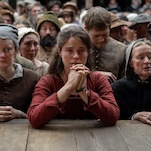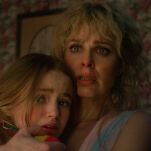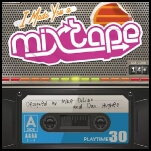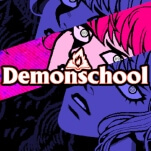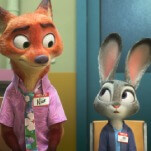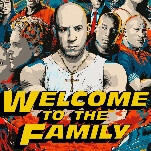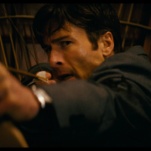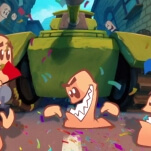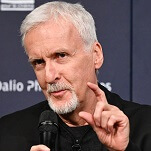Hamlet becomes art therapy in the hands of 2025's films
All the world's a stage in 2025, and all the films are performing Hamlet.
Photo: Sony, Mubi, Focus Features
Hamlet, William Shakespeare’s most famous play, was the subject of three different movies this year. However, this trio of films were a far cry from Kenneth Branagh’s unabridged adaptation, or even the 2000 movie where Ethan Hawke delivers the “To be, or not to be” speech inside of a Blockbuster video. Any high school English student trying to watch a movie instead of doing the assigned reading would fail if they watched 2025’s takes on Hamlet. These were much weirder stories: an emotionally devastating biopic about the Bard himself and the son whose death may have inspired the play, a documentary about performing the play inside a violent video game sandbox, and a gender-swapped anime epic about a quest for revenge in the underworld. Though they might not be Hamlet for Shakespeare purists, Hamnet, Grand Theft Hamlet, and Scarlet are using the totemic legacy of the play to a greater end. This tragedy is one of the most well-known works of art in all the world; these movies draw on that familiarity to show how essential art is in times of tragedy. That they’re all riffing on a 400-year-old play only makes them more relevant to the modern age.
Hamlet is endlessly rich, with countless interpretations and thematic readings, but grief has always been central to it. Hamnet, filmmaker Chloé Zhao’s Oscar frontrunner, is the tearjerker of 2025’s adaptive trio. Starring Paul Mescal as the Bard and Jessie Buckley as his wife, Agnes, this take on Maggie O’Farrell’s 2020 novel tells of their profound love and profound loss. Shakespeare’s son, Hamnet, died when he was 11, and the emotionally broken playwright, guilty that he wasn’t able to save his boy, channels his grief into a work where it’s the father who dies and the similarly named son who seeks revenge.
Hamnet culminates in the first performance of Hamlet at the Globe Theatre. In the audience is Agnes, estranged from her husband after he threw himself into his writing as some form of therapy. (Or is it penance?) To the sounds of Max Richter’s “On The Nature Of Daylight,” Agnes’ anger over his hijacking of her dead son’s name turns into catharsis. She connects with the actor playing Hamlet and watches a stand-in for her boy, grown to an age he’ll never see, meet a dignified end. The loss of a child in an unfathomable one, a personal tragedy too fundamental and raw for even the grandest tragic play to truly match. It’s ironic then that the moviegoing audience’s familiarity with Hamlet helps unlock Agnes’ complex emotions. After spending so much intimate time with this family going through the worst possible event, it’s a performance on a stage that lets Agnes—and the viewers—find something to relate to. Stories, especially a touchstone like Hamlet, are something we can understand. Through art, there’s some measure of peace.
Grand Theft Hamlet similarly utilizes Hamlet‘s legacy in an attempt to deal with a specific and sweeping grief, and to find some catharsis—albeit in a less devastating way than Hamnet. The British documentary tracks the efforts of theater actors Sam Crane and Mark Oosterveen as they attempted to make art while shut away during one of the U.K.’s COVID lockdowns. While playing Grand Theft Auto Online, Crane happened across a large outdoor stage in the game’s virtual world and decided that it would be a fun challenge to stage a production of Hamlet inside a game where everybody is shooting each other all the time. Language barriers, actors whose avatars look like dancing aliens, drive-by shootings and bystanders with rocket launchers interrupting rehearsal, and blimp mishaps all contribute to making this a uniquely rowdy Hamlet. But despite all that, it’s still Hamlet—and, of course, it had to be Hamlet. If you were going to put on a play inside Grand Theft Auto, Hamlet would be the one you’d pick. You wouldn’t stop pulling carjackings for any old play. Hamlet’s influence is as strong in the virtual world as it is in the real one.






